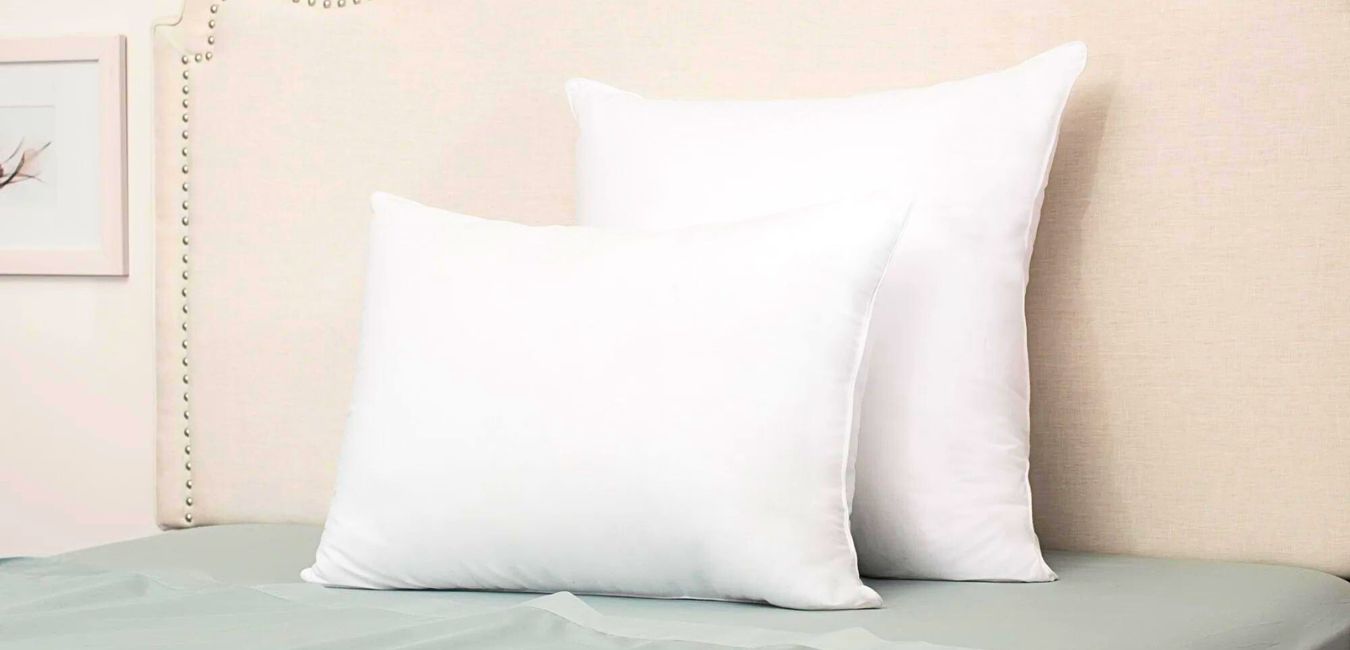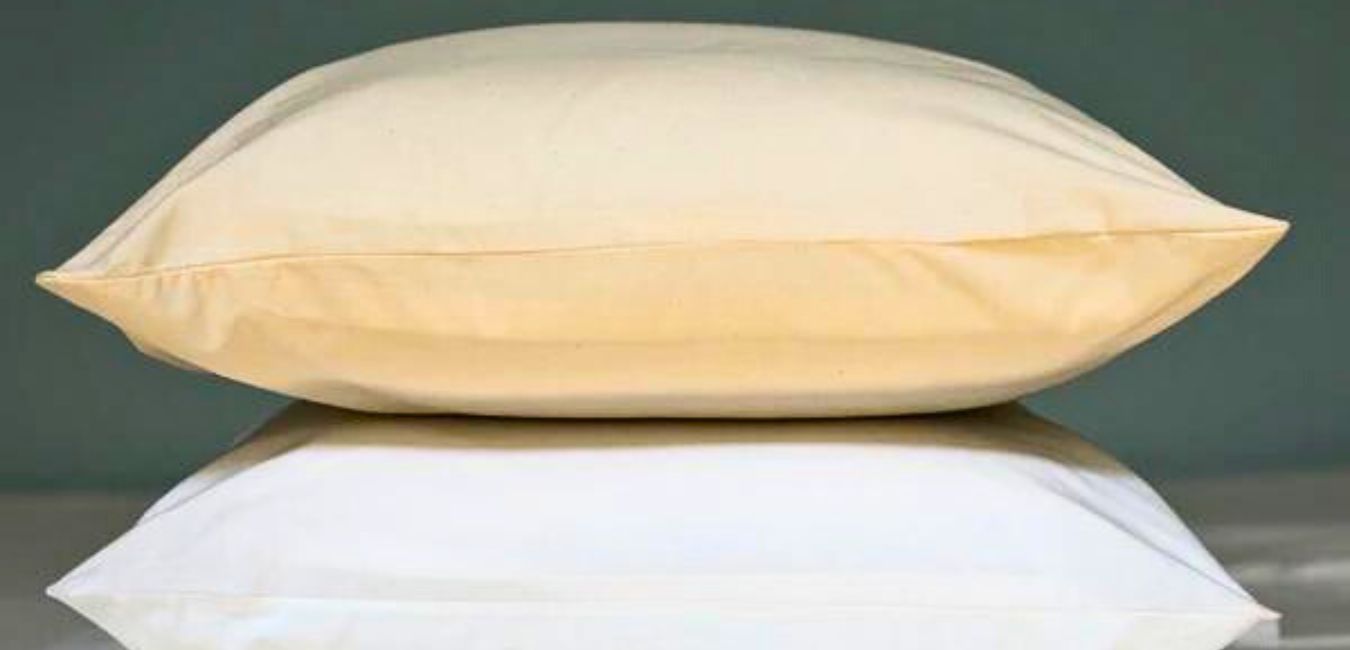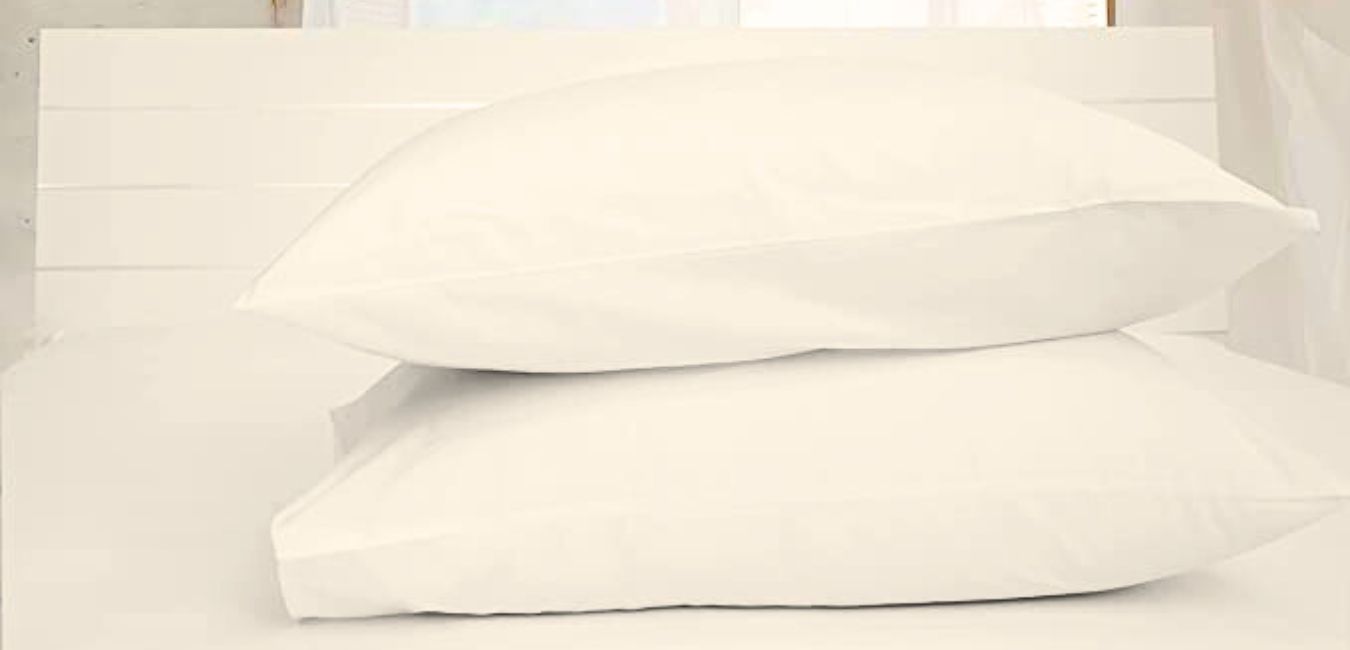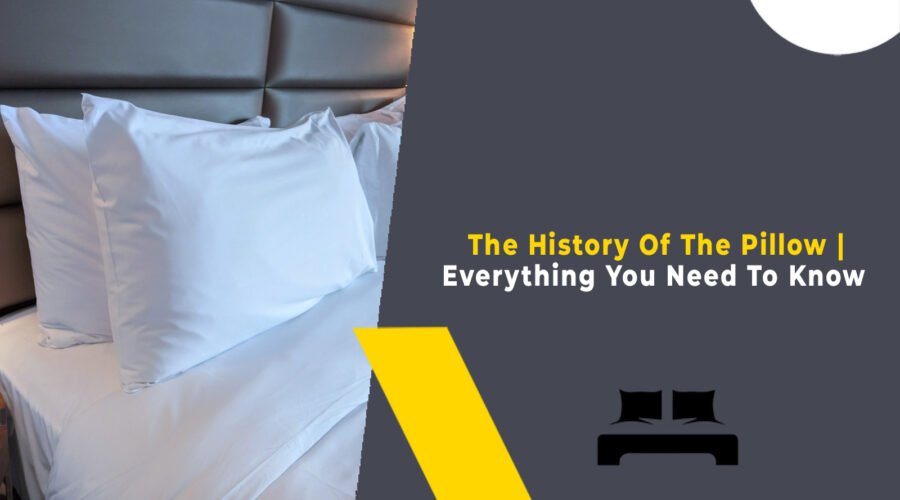Indulge in a journey through time, where the humble pillow unveils its captivating history, spanning centuries of comfort, culture, and serenity.
Beyond its seemingly ordinary existence lies a remarkable story waiting to be discovered—one that intertwines with the very essence of human relaxation.
Step back to ancient civilizations, where primitive forms of pillows were ingeniously crafted from natural materials, serving not only as cushions but also as symbols of status and protection.
Traverse the vibrant tapestry of cultures, from the opulent cushions of Egyptian pharaohs to the silk-filled dreams of Chinese emperors, each carrying tales of luxury and sophistication.
Explore the intricate craftsmanship of medieval European pillows for side-sleepers, adorned with ornate embroidery and delicate lace, whispering tales of elegance and romance.
From the sacred pillows of religious rituals to the treasured heirlooms passed down through generations, witness how pillows have embraced diverse traditions, beliefs, and customs with guides on how to return a mattress.
Join us on this captivating expedition as we uncover the fascinating history of the pillow—a silent companion that has cradled our dreams, soothed our weary souls, and provided solace in the darkest of nights. Let’s dive in!
What is a pillow?
With different types of memory foam, a pillow is a soft cushion or support for the sleeping head, neck, or other parts of the body during sleep, rest, or relaxation.
It is typically filled with a soft material such as feathers, down, synthetic fibers, or foam, and is covered with a fabric casing.
Pillows come in various shapes and sizes, including rectangular, square, round, or contoured designs, to accommodate different sleeping positions and preferences.
The primary function of a pillow is to provide comfort and support for the body while lying down or resting.
Additionally, pillows can enhance sleep quality by relieving pressure points, reducing snoring, and aiding in the prevention of sleep-related issues such as neck pain, headaches, and stiffness.

Throughout history, latex pillows have held cultural and symbolic significance beyond their practical use.
They have been associated with wealth, status, and luxury, with different cultures showcasing unique designs, decorations, and materials in their pillows, these things determine how long does a mattress last?
Specialized pillows, such as memory foam pillows, cervical pillows, or cooling pillows, offer tailored support and comfort for specific sleep requirements. Moreover, decorative pillows have become popular for adding style and aesthetics to bedrooms in cradle shape and living spaces, further enhancing the visual appeal of a room.
Who invented the pillow?
The invention of the pillow dates back thousands of years, and its exact origin is difficult to determine with certainty.
Pillows have been used by various ancient civilizations independently, each developing their versions and now the simple steps guide us on how to donate a mattress.
Ancient Egyptians are credited with some of the earliest recorded use of pillows. They crafted pillows from stone, wood, or ceramic materials, elevating the head to provide comfort and support while sleeping. These pillows were often decorated and symbolized wealth and status.
In ancient China, pillows were made of porcelain, jade, or bronze, and they were seen as luxury items used exclusively by the elite. Chinese pillows were designed to support the neck rather than just the head.
The ancient Greeks and Romans also used pillows, typically made of cloth and stuffed with straw, polyester filling, feathers, or reeds. These pillows were simpler in design and used by a wider range of people.
The specific individual who can be credited with inventing the pillow remains unknown due to its ancient origins and widespread usage across different civilizations.
However, the concept of using a cushion or support for the head during sleep has evolved and been refined over time, resulting in the diverse range of pillows we have today like mattress firm warranty.

History of pillows timeline
Here is a timeline highlighting key developments in the history of pillows:
- 4000 BCE: Ancient Mesopotamia and Egypt
Stone and wooden headrests are used by ancient Mesopotamians and Egyptians for sleeping. These early prototypes can be considered the precursors to pillows.
- 2000 BCE: Ancient China
Chinese nobility uses pillows made of porcelain, jade, or bronze, emphasizing neck support rather than just head support.
- 800 BCE: Ancient Greece
Pillows made of cloth stuffed with natural materials, such as straw or feathers, become more common in ancient Greece.
- 500 BCE: Ancient Rome
Pillows made of softer materials, such as cloth and feathers, gain popularity in ancient Rome. Romans begin using pillows as symbols of comfort and luxury.
- 700-1100 CE: Medieval Europe
Pillows become more widespread in medieval Europe, reflecting social status and wealth. Pillows during this period are often elaborately decorated with embroidery and lace.
- 1500-1800 CE: Renaissance and Enlightenment
The Renaissance and Enlightenment periods see advancements in pillow design and materials. Feathers and down become popular fillings, and pillows become more accessible to the middle class.
- 19th Century: Industrial Revolution
The Industrial Revolution introduces new manufacturing techniques, making pillows more affordable and widely available. Machine-made pillows with cotton and synthetic fillings become common.
- 20th Century: Technological Advancements
With the development of new materials and technologies, pillows become more specialized. Memory foam pillows are introduced, providing customized support and pressure relief.
- 21st Century: Innovation and Variety
The modern era sees a wide range of pillows tailored to different needs and preferences. Cooling pillows, orthopedic pillows, and ergonomic designs become popular, offering enhanced comfort and support.
Throughout history, pillows have evolved in terms of design, materials, and accessibility. From simple headrests to luxurious and technologically advanced pillows, they continue to play a significant role in enhancing sleep quality and comfort for people worldwide.
When were pillowcases invented?
The invention of pillowcases can be traced back to ancient civilizations, although the exact timeline is uncertain.
The use of pillowcases likely emerged alongside the development of pillows themselves and you must know facts about mattresses.

In ancient Egypt, pillowcases were used as early as 3000 BCE. Egyptian mummies have been found wrapped in linen cases, which were essentially pillowcases used for burial purposes. These linen cases protected the pillow and maintained its cleanliness.
In ancient Rome, pillowcases were also used during the 1st century CE. They were typically made of expensive fabrics and decorated with intricate embroidery. Roman pillowcases were seen as a symbol of wealth and luxury.
As the Middle Ages progressed, the use of pillowcases became more widespread in Europe. They were primarily made of coarse fabrics and served the practical purpose of protecting the pillow from dirt and stains.
During the Renaissance and subsequent centuries, pillowcases became more refined. Fine linens, silks, and lace were used to create elaborate and decorative pillowcases for different purposes.
They were often embellished with intricate embroidery, monograms, and decorative motifs.
With the advent of industrialization in the 19th century, pillowcases became more accessible to the general population.
Machine-made textiles allowed for mass production, making pillowcases more affordable and readily available. The manufacturing of pillows according to mattress describes why mattresses are so expensive.
Today, pillowcases are commonly made from various materials such as cotton, polyester, satin, or silk. They serve the dual purpose of protecting the pillow and providing a comfortable surface for the head during sleep and helping to avoid insects.
When were feather pillows invented?
Feather pillows have a long history, dating back thousands of years. While it is difficult to determine the exact year of their invention, evidence suggests that feather-filled pillows have been used for centuries.
Feathers were a readily available and comfortable filling material, making them a natural choice for early pillows. Here are some notable milestones in the history of feather pillows:

Ancient Civilizations
Feather-filled pillows were used in ancient Egypt, as early as 3000 BCE. Archaeological findings have revealed ancient Egyptian tombs containing feather-stuffed pillows.
Ancient China
Feather pillows were also utilized in ancient China, particularly during the Tang Dynasty (618-907 CE). Chinese nobility often enjoyed the luxurious comfort of feather-filled pillows.
Medieval Europe
Feather pillows gained popularity during the Middle Ages in Europe. They were primarily used by the wealthy and aristocracy as a symbol of luxury and comfort.
17th and 18th Centuries
Feather pillows became more common among the general population during this period. As feather-stuffed pillows were more affordable, they became increasingly accessible to a wider range of social classes.
19th Century
Industrialization and technological advancements allowed for more efficient production of feather pillows. The rise of the textile industry facilitated mass production, making feather pillows even more widespread according to the mattress how much does a mattress weigh?
Today, feather pillows remain popular due to their softness, comfort, and natural insulation properties. They are often filled with a combination of feathers and down (the soft undercoating of waterfowl feathers) to provide optimal support and comfort for sleep.
Uses of pillowcase
Pillowcases serve several practical and functional purposes, enhancing the comfort and maintenance of pillows with the help of Nuzzle Pillow Review. Here are some common uses of pillowcases:

- Protection
Pillowcases act as a protective barrier between the pillow and the sleeper. They help prevent dirt, oils, sweat, and other substances from directly coming into contact with the pillow, keeping it clean and hygienic.
- Comfort and Softness
Pillowcases provide a soft and smooth surface for the head, enhancing the overall comfort of the pillow. They offer a gentle touch against the skin and help create a cozy sleeping environment.
- Customization and Style
Pillowcases come in various colors, patterns, and fabrics, allowing individuals to personalize their bedding and match their décor. They can be changed or replaced to update the look of the bedroom easily.
- Temperature Regulation
Different fabrics used in pillowcases, such as cotton, linen, or satin, offer different levels of breathability and temperature regulation. Choosing the right pillowcase material can help promote a cooler or warmer sleep experience based on personal preferences.
- Travel and On-the-Go
Pillowcases can be used to cover travel pillows, making them more comfortable and hygienic during journeys. They also provide a convenient way to carry pillows or protect them when not in use.
Pros
- Pillowcases shield the pillow from dirt, oils, and sweat, extending its lifespan.
- Soft and smooth pillowcases enhance the overall comfort of the pillow.
- Different materials provide options for breathability and temperature control.
- Easily removable and washable, making maintenance and care hassle-free.
- Pillowcases can cover travel pillows, ensuring comfort and hygiene on the go.
Cons
- Purchasing pillowcases adds to the overall expense of bedding.
- Some individuals may have specific sensitivities or allergies to certain fabrics used in pillowcases.
- Regular washing and care of pillowcases require time and effort.
History Of The Pillow – FAQs
Conclusion
This article provides a helpful overview of the history, facts, purpose, and origin of pillows, you can choose a good one with Ghost Pillow review.
It draws upon historical evidence and general knowledge to offer insights into the development of pillows over time. While it offers a concise summary, it may not encompass the depth of expertise of experienced sleepers and manufacturers.
For a more comprehensive understanding and practical advice, consulting sleep experts, manufacturers, and individuals with personal experiences can provide valuable insights into the world of pillows and their impact on sleep quality and comfort.




